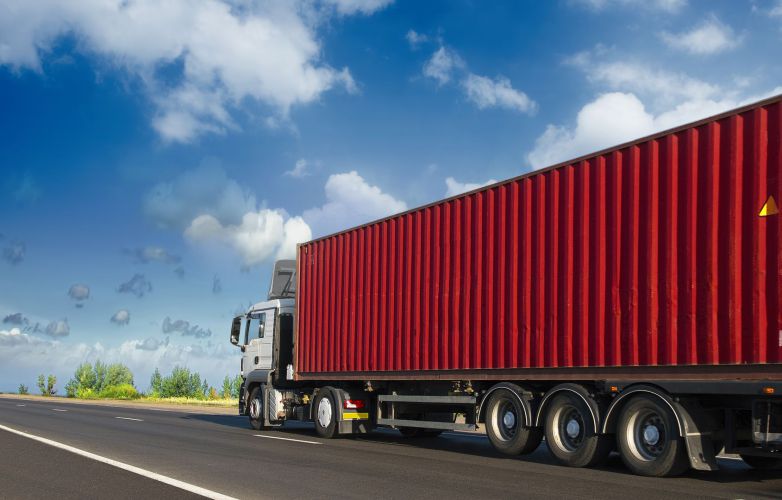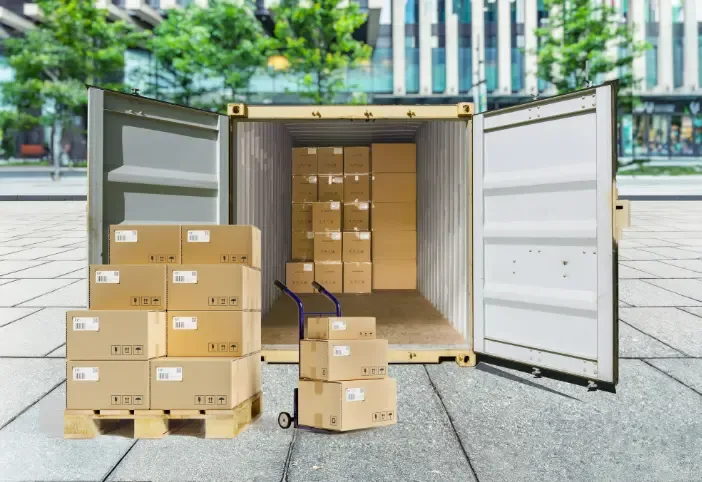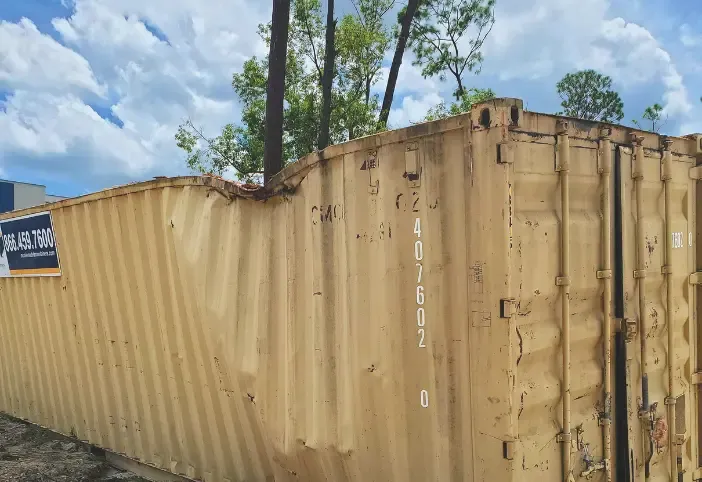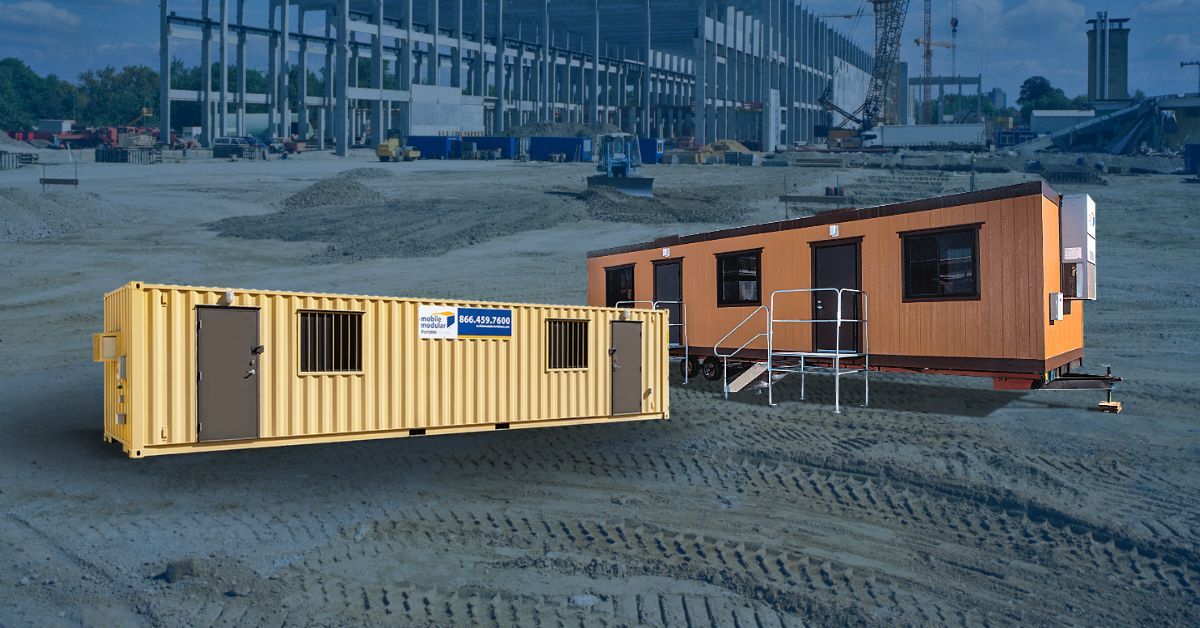- Rent, Lease, or Purchase
- |
May 15, 2017
Shipping Container Trailers

Shipping containers are the perfect solution for transporting all kinds of goods and equipment across large distances. Once you load the cargo in a container, the next step is selecting an appropriate container trailer that ensures your property is safe.
What Is a Container Trailer?
Container trailers, also called intermodal trailers, have a distinctive design suited to accommodate and transport shipping container units of varying lengths and heights. The frames, chassis, and support accessories on these trailers can carry the Conex box effectively on bumpy roads, accommodate its additional size, and assist in effective unloading.
Are you planning on transporting your container? Please read our guide on how to move a shipping container safely.
What Are the Types of Shipping Container Trailers?
The most common shipping container trailer models are:
- Flatbed model
- Tipping/Tilt model
- Gooseneck model, and
- Chassis model
Let’s explore each option in detail.
Flatbed Trailers
As the name suggests, a flatbed trailer has a flat, rigid frame that consists of two longitudinally spaced beams. These beams have a unique, welded cross-sills connection between them, providing adequate strength to the overall structure.
The distinctive frame of this trailer helps accommodate the wheels, landing gear, floor (or bed), and suspension system.
Since the stability of these components depends upon the frame strength, most flatbed trailer designs incorporate aluminum or steel beams in their construction.
While transporting goods, you must also consider the legal weight limit in your country. The weight limit generally includes the weight of the load and trailer weight.
Steel trailers weigh a minimum of 10,000 pounds, whereas aluminum trailers have a minimum weight of 8,500 pounds. Aluminum trailers, being lightweight, allow you to ship a higher gross weight or more goods.
While the initial cost of buying an aluminum flatbed trailer is generally higher, they are more efficient in the long run. As aluminum flatbeds can transport heavier loads, industries can benefit from reduced labor costs, wear and tear, and fuel consumption.
Tipping/Tilt Trailer
Tipping trailers or tilt trailers have a hydraulic cylinder that raises the trailer platform.
The additional apparatus helps simplify the loading and unloading of the container on the trailer bed without a crane. These trailers consist of an upper and lower frame secured with a pivot device.
During offloading, the trailer operator unlocks the container and lets it loose from the top. The backward container tilt allows the container to slide off steadily under gravity. Once the container touches the ground, the truck slowly moves forward, allowing the container to slide further and assume a vertical position.
Gooseneck Trailer
Gooseneck models are available in both flatbed and chassis varieties.
These trailers have a decked design that imparts more safety and stability.
Another advantage of using a gooseneck trailer is that you can transport containers or loads that exceed the legal height limit.
These trailers do not depend solely on the frame structure to support the load. Instead, the rear axle carries the maximum weight of the shipment, lowering the center of gravity to keep the container stable. Since they transport heavier, more stable loads, maneuvering these trailers is also much more straightforward.
Container Chassis Trailer
Shipping containers come in various sizes. While standard trailers can transport the common containers, some containers require special vehicles due to their dimensions. In addition, many states implement bridging laws, which define the acceptable distance between the rear and front wheels of heavy-duty vehicles.
A container chassis trailer helps overcome these challenges and transports different containers.
These trailers have a truck chassis capable of taking high-weight containers without loading and offloading issues.
You can also adjust the frame size on chassis trailers to achieve desired levels of maneuverability, even in rugged conditions.
Advantages of the Chassis
Using a chassis trailer instead of a conventional pickup truck offers the following benefits:
- Cost-effective construction
- Lightweight, high-strength, and rigid structure
- Ability to carry heavy cargo
- Readily available in different sizes and can perform a wide range of functions.
- Can carry 20-foot, 40-foot, and 45-foot shipping containers
Available chassis trailer varieties are listed below:
1. Common Chassis
A common chassis trailer has a fixed structure that helps transport a wide range of payloads. In addition, the high-strength steel construction allows you to load and offload the container on the frame using overhead cranes without worrying about the weight.
Chassis trailers have landing gear that enhances the stability of the container during loading and unloading. While this type of container is affordable and straightforward to use, the need for additional external accessories can lead to possible operational delays.
2. Load Positioning Chassis
These trailers have a movable slider or a bogie unit that assists in the efficient placement of the container unit at a suitable position along the length. In addition, the construction features a retractable roller mechanism and a releasable coupling on the bogie and the bolster units to help the bolster travel along the chassis length.
3. Extended Chassis
Extended trailers have a shorter structure similar to the common chassis model but can extend from the rear. Using an extended chassis, you can carry all kinds of different storage container sizes. You can also adjust the wheel position of these trailers to comply with the legal requirements.
The main advantage of an extended chassis structure is that you can transport a sealed container across state borders without unpacking or reloading the container trailer.
When using container chassis trailers, you must ensure that the chassis should have a greater length than the container and that the load occupies a central position on the floor or the bed.
Shipping Container Trailer Dimensions
Before selecting an appropriate trailer for your shipping containers, you should get familiar with available specifications and dimensions to ensure that your storage unit is safe. The two most commonly available sizes are as follows:
20-Foot Chassis Trailers
20ft container chassis trailers feature two axles that can carry a total weight of 30,35 T/tons. With a rated load capacity of 30 T/tons, these containers can hold a maximum tare weight of 4000 kg.
There are eight wheels on these trailers that help in effective load distribution. The main beam height spans from 450 to 580 millimeters.
40-Foot Chassis Trailers
The 40-foot chassis trailer is ideal for large containers. With a 3-axle design, these trailers can carry a tare weight of up to 7000 kg. In addition, these trailers have a 12-wheel design that enables high stability.
Similar to 20-foot trailers, the main beam spans in the 450-580 mm height range.
How You Can Use Shipping Container Trailers
Take a look at the scenarios listed below to learn more about when to use a shipping container trailer.
Example 1: Ensuring Equipment is Stored at the Right Height
Consider that you require storage of tools and equipment near your warehouse.
Generally, the entrance of a warehouse consists of a raised loading dock. Keeping the storage container just outside the warehouse can help in easy loading and loading.
However, since the dock is at a higher level, you may have to place the container directly at the ground level, leading to delays. Additionally, the loading dock may not have adequate room to accommodate the storage unit.
In this case, using a chassis can help add height to the storage container and bring it to an equal level with the loading dock and create an extension of the docking space. Thus, using a trailer will allow you to quickly access the container without needing stairs or ramps to reach the container door.
Example 2: Risk-Mitigation on Rugged Roads
Suppose you need to transport a storage container containing sensitive goods or valuable inventory. These shipping containers must not suffer any damage during the trip, even when traveling on rough roads.
Traditional trucks and intermodal trailers may not be very ideal, especially if you're transporting to a geographically challenging location.
Mounting your container on a chassis-based trailer system can help preserve the container's structural integrity as the chassis frame secures the container in one place.
Renting vs. Buying A Container Trailer
Buying a container can be a cost-effective solution for the following applications:
- Loading and transporting 20-foot and 40-foot shipping containers
- Moving modular, pre-built homes
- Portable offices, buildings, and warehouses
Customers can rent a trailer at a fraction of the sales price if they require one-time transportation or delivery and want to avoid paying upfront capital costs.
Although buying is more suitable in the long run, you must factor in the maintenance, storage, and depreciation costs.
Learn more about shipping container delivery.
How to Choose the Right Shipping Container Trailer?
While selecting the type of trailer for your transportation needs, you must consider the following factors:
Weight Capacity
A flatbed container may be suitable for general transportation. However, if you need to carry high-weight containers, you’ll need a 2-axles or 3-axles container chassis trailer. These trailers have a specific structure that helps carry larger loads.
You can also adjust the frame to meet the maneuverability, loading, offloading, and axle spacing conditions.
Number of Axles
The number of axles on a trailer can help determine the amount of cargo you can carry. There are two options you can choose from- 2-axles and 3-axles. The number of axles can also vary according to the type of trailer. For instance, flatbeds can support wheel axle assemblies along the trailer length due to their simple construction.
Application
If you intend to use the trailer for containers only, you should look into the chassis trailer. However, if you want to transport containers and other cargo, flatbed trailers can be more beneficial. A tipping trailer is your best bet if your company requires frequent loading and unloading.
Cost
For basic operations, selecting a tipping trailer might not be wise. Similarly, choosing a low-priced flatbed trailer might not be very suitable for transporting sensitive goods and equipment. Therefore, while selecting a trailer, always aim for a balance between cost and functionality.
Conclusion
A shipping container trailer can be the most effective way of transporting storage containers. These trailers have various construction specifications to suit niche applications. With a wide range of trailers to choose from, you can select the one that suits your budget, applications, and industry.
Mobile Modular Portable Storage is a leading supplier of portable shipping containers. With our own fleet of trucks and trailers, we ensure hassle-free, on-time transportation of shipping containers.
Learn how we ensure safe and reliable delivery.
Frequently Asked Questions
Can container trailers transport other containers?
Container trailers have a distinctive design that accommodates and transports shipping containers of varying lengths and heights, ensuring safe transportation. The structure, chassis, and support accessories on these containers can carry other containers effectively on bumpy roads, accommodate their additional size, and assist in effective unloading.
What kind of trailers haul shipping containers?
Some of the common types of trailers that haul shipping containers are:
- Flatbed Trailers
- Gooseneck Trailers
- Tilt Trailers
- Chassis Trailers
Depending on the weight requirements, road conditions, maneuverability, and loading/offloading requirements, you can select an appropriate container.
How do shipping containers stay on trailers?
Shipping containers stay secure on the trailer with the help of a rotating connector assembly. The assembly consists of a twist lock and corner casting that holds the container in its place.
While transporting containers, delivery companies also secure the container with the help of chains and belts to prevent any unwanted movement.
How do you put a shipping container in a trailer?
You can place a shipping container on a trailer with the following steps:
- Position the trailer in the designated area
- Move the container with the help of a forklift, crane, side loader, or moving equipment.
- Secure the container in place with the help of twist locks
- Use ropes and belts to ensure that the shipping container stays in place
Related Blogs



Subscribe to Our Blog
Enter your email address to subscribe to the blog and receive the notification of new posts by email.
Thank You for Subscribing to Our Blog!
Stay tuned for upcoming emails with valuable content that we hope will enhance your experience with our brand.
Both Pardot and mg360 form submissions failed.
